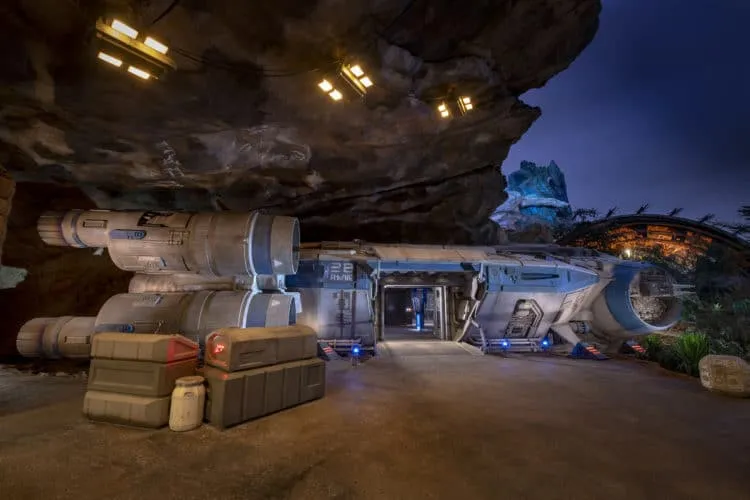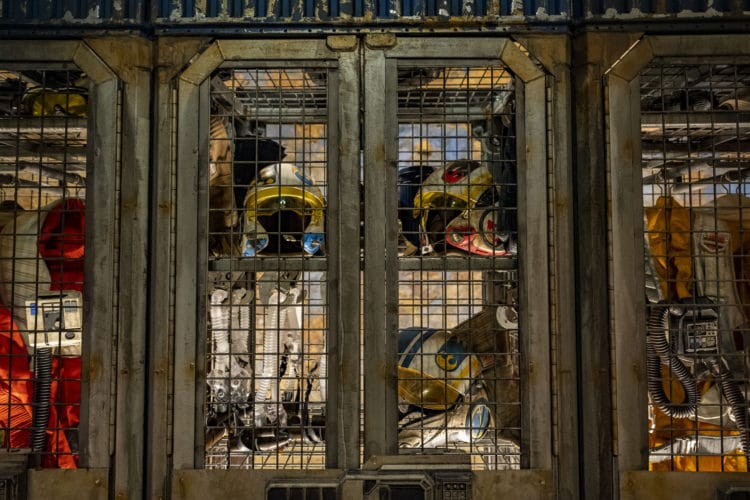The Walt Disney Company’s position on VR isn’t exactly encouraging to the medium’s enthusiasts. Across several years, CEO Bob Iger offered the occasional statement downplaying VR’s role for attractions. And the newly opened Star Wars: Rise of the Resistance attraction is a great example of just how far actual VR has to go before it can reach the same sensory-encompassing heights.
Outside Disney Parks The VOID partnered for Avengers, Wreck It Ralph and Star Wars attractions. Facebook also paid what I imagine is an unholy amount of money to get Vader Immortal made exclusively for Oculus VR headsets in 2019.
Within Disney parks, though, the fundamental limitations of current VR headsets keeps the technology from powering its attractions in any meaningful way. Sure, Disney employs VR technology in the attraction design process. Plus, you wear glasses for a convincing 3D effect in Toy Story Midway Mania or Mickey’s PhilharMagic Concert. Even in Soarin’ and the Avatar attraction at Animal Kingdom there’s an ultra panoramic screen and scent effects to increase immersion. None of it is VR entertainment in even the vaguest sense of the term, but at the same time Disney attractions are built to entirely block the outside world and draw you into a fictional story by stimulating senses in all-encompassing ways.
To understand why current generation VR headsets don’t fit Disney’s needs, though, you can just spend time in the backpack loading area for a VOID adventure, or experience the jarring sense of loss when your hand disappears or your arm is represented in the wrong position. To keep its economics strong Disney needs to accommodate everyone, and a mind-boggling number of them everyday, with remarkably few failures. Current VR headsets can’t do that.
But there’s an argument to be made that Disneyland represents the Westworld-like pinnacle of physical simulation. I don’t really want to debate definitions along the reality-virtuality continuum but I think there is meaning in looking at what Disney Parks offer compared to the entertainment value of a VR headset. After all, in both Disney Parks and VR software a fabricated environment is populated by characters meant to to entertain visitors.
Through this lens is how I recently experienced Star Wars: Rise Of The Resistance at Disneyland.
Joining The Resistance
I walked out of the attraction by pushing a gate open to re-enter Star Wars: Galaxy’s Edge and it was as if I had walked between two levels of simulation. Why are there shops selling merchandise I’d wear on Earth? Why does the sky look like Southern California’s? Rise Of The Resistance was such a surprising and complete experience that Disney’s most immersive area seemed like a facade by comparison. And comparing the current home VR standard of Quest or Index to either Disney-built venue is to compare a full experience to one in VR that is hollow, locomotion-limited, field of view-constrained, and tied to a single focal plane that is capable of only stimulating about half your senses.
I’d like not to spoil Rise Of The Resistance for people who plan to visit it soon. I went into it completely oblivious and I’d recommend that to others. I planned a trip to Disneyland with my family which just happened to coincide with opening weekend for the attraction. So when I tapped the app precisely at 8 am to try and reserve a spot, a park full of guests tapped their phones at the same time. We nabbed a spot though and were admitted around 2 pm.
The biggest spoiler on this page, by the way, is in the video below. The video, however, is only from the brief introduction to the attraction.
Unparalleled Use Of Space
Everything within arm’s reach in Rise Of The Resistance is touchable. You press against physical walls or floors and grab rails and feel real solid resistance with any part of your body. Facebook researchers suggest we may still be a decade or more away from haptic hands that can simulate certain aspects of human touch. That means there’s a long time for Rise Of The Resistance to represent one of the world’s most impressive and complete illusions.
From small vibrations to heavy lurches, the biggest gap between the best VR of 2020 and the complete illusion of Disney’s newest attraction is the way physical feedback relates to 1:1 movement through space. Rise Of The Resistance is a multi-room adventure and its most engrossing moments come in the transition between spaces, providing unexpected moments that seem fundamentally impossible with “room-scale” home VR or even the multi-room waist-high physical walls that bound many VOID encounters. Sure you may have seen a jaw drop in a VR headset, but this attraction made a room full of jaws drop simultaneously in view of the true scale of Imagineering accomplishment.
I cannot say enough about the sense of awe drawn out by first forcing the visitor to focus on their sense of balance, steeling oneself to being artificially shuffled about while standing, and then suddenly feeling a rush of air — and perhaps the smell of an entirely different place — calling through an open door.
That’s about as close to a spoiler as I’ll provide but suffice it to say that modern VR software employs cinema-like fade to black, instantaneous teleportation, stick-based locomotion, as well as simulated cockpits to convey the passage of distance or time. The magic of Disneyland has always been about walking between fantastic places. Rise Of The Resistance hones this fundamental memory-making premise around an entire four act Star Wars story and delivers it at a scale I’ve never seen before.
To be clear, a lot of what is happening in Rise Of The Resistance is already technically done by other attractions. The early parts can seem familiar when compared to Star Tours or Millenium Falcon: Smugglers Run, for example, but that familiarity is just like the setup for a magician’s trick. The latter parts — essentially acts 3 and 4 in this story — are strung together by the literal act of walking between stages and they elevate this journey to something I’ve never experienced before. That’s the part VR won’t be able to truly touch for a long time.
The end result is a complete and deeply moving story that, to Iger’s point, I am unlikely to see truly replicated by a VR headset anytime soon.





























